
Dreaming in Code: Two Dozen Programmers, Three Years, 4,732 Bugs, and One Quest for Transcendent Software
by
Scott Rosenberg
Published 2 Jan 2006
Raymond’s key insight was less a matter of explaining why it was useful for programmers to have access to source code than of identifying the importance of the Internet, and of Torvalds-style leadership, in making that access to code valuable. “The Cathedral and the Bazaar” made a persuasive case for Torvalds’s brand of open source as a leap forward, but it didn’t fully come to grips with the difficulties Brooks had identified in the process of building new software from scratch. Raymond showed how the open bazaar could harness the talents of a larger number of programmers without activating the harsh logic of Brooks’s Law, but he couldn’t show that open source made it any easier to predict how much time it would take to write a new program or to speed its delivery to a waiting public. “The Cathedral and the Bazaar” doesn’t actually repeal Brooks’s Law and solve the problem of time in software development; it maps an alternate universe for programming in which time is simply less important because the work is cooperative rather than corporate, the workers are all volunteers, and the motivation is fun and ego, not financial reward.
…
But what if self-motivated programmers actually produced better code? And what if they did so more efficiently? Open source doesn’t just offer an alternative economic basis for producing and distributing software; it can radically change the nuts-and-bolts process of developing software—moving it from the cloistered few to a distributed crowd. “The Cathedral and the Bazaar,” a 1997 essay by programmer Eric S. Raymond, remains the most cogent explanation of that change. Raymond, a longtime hacker of the old school, described the epiphany he felt when he first realized the implications of Torvalds’s techniques: I had been preaching the Unix gospel of small tools, rapid prototyping and evolutionary programming for years.
…
No quiet, reverent cathedral-building here—rather, the Linux community seemed to resemble a great babbling bazaar of differing agendas and approaches . . . out of which a coherent and stable system could seemingly emerge only by a succession of miracles. The fact that this bazaar style seemed to work, and work well, came as a distinct shock. “The Cathedral and the Bazaar” dissected Torvalds’s style of managing the Linux project over (then) half a decade’s development from personal hobby to global phenomenon and derived a set of principles from it. “Every good work of software starts by scratching a developer’s personal itch.” Programmers are motivated and led toward their best work by a desire to accomplish something that pleases them or fulfills a personal need.
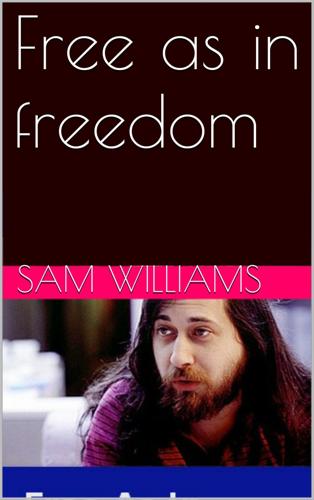
Free as in Freedom
by
Sam Williams
Published 16 Nov 2015
It is also a sharp critique of 19th century educational theory and practice. In 1907, Adams began privately circulating copies of a limited edition printed at his own expense. Commercial publication had to await its author's 1918 death, whereupon it won the 1919 Pulitzer Prize. Eric S. Raymond 188 The Cathedral and the Bazaar The Cathedral and the Bazaar is an essay by Eric S. Raymond on software engineering methods, based on his observations of the Linux kernel development process and his experiences managing an open source project, fetchmail. It was first presented by the author at the Linux Kongress on May 27, 1997 in Würzburg and was published as part of a book of the same name in 1999.
…
Or as Torvalds himself would later translate it when describing the secret of his success: "I'm basically a very lazy person who likes to take credit for things other people actually do."Torvalds has offered this quote in many different settings. To date, however, the quote's most notable appearance is in the Eric Raymond essay, "The Cathedral and the Bazaar" (May, 1997). Such laziness, while admirable from an efficiency perspective, was troubling from a political perspective. For one thing, it underlined the lack of an ideological agenda on Torvalds' part. Unlike the GNU developers, Torvalds hadn't built an operating system out of a desire to give his fellow hackers something to work with; he'd built it to have something he himself could play with.
…
Adding more men then lengthens, not shortens, the schedule. See Fred P. Brooks, The Mythical Man-Month (Addison Wesley Publishing, 1995) Raymond put his observations on paper. He crafted them into a speech, which he promptly delivered before a group of friends and neighbors in Chester County, Pennsylvania. Dubbed " The Cathedral and the Bazaar," the speech contrasted the management styles of the GNU Project with the management style of Torvalds and the kernel hackers. Raymond says the response was enthusiastic, but not nearly as enthusiastic as the one he received during the 1997 Linux Kongress, a gathering of Linux users in Germany the next spring.
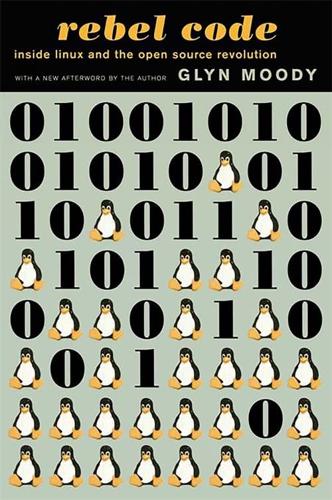
Rebel Code: Linux and the Open Source Revolution
by
Glyn Moody
Published 14 Jul 2002
Through his experiences with Fetchmail, Raymond was able to test and refine his ideas about how it might be possible to “do high quality software with a mob,” as he put it. The result was his essay The Cathedral and the Bazaar, which he wrote in late 1996 and finished in early 1997. As well as being freely available online, the essay has also been published in book form by O’Reilly & Associates, along with Raymond’s other essays. The Cathedral and the Bazaar begins with a challenge to the software world: “Linux is subversive.” Raymond then goes on to explain the basic metaphors of his paper: “I believed that the most important software (operating systems and really large tools like Emacs) needed to be built like cathedrals, carefully crafted by individual wizards or small bands of mages working in splendid isolation, with no beta to be released before its time.”
…
And so I sent him back some mail, basically saying sure, standards are good. And I didn’t hear back from him. I still don’t know why.” Happily for Raymond, he has many other claims to fame other than almost co-inventing the World Wide Web. Probably his most important achievement, the essay The Cathedral and the Bazaar, which analyzes the success of Linux and open-source software, arose in part because of a CD-ROM that turned up on his doorstep in late 1993. The CD-ROM was from the GNU/Linux distributor Yggdrasil, and as Raymond recalls was “the first available CD-ROM Linux distribution. That landed on my doorstep because I had already written enough free software that some of my stuff was on that disk.”
…
Brooks hovers as a constant presence over not only Raymond’s paper but of the entire free software movement. Although Brooks was writing about the creation of mainframe software decades ago, the essays in which he described and warned against the pitfalls of large-scale development projects also indirectly suggest ways of avoiding them—do things in a radically different manner. Much of The Cathedral and the Bazaar is about understanding how to realize that difference in practical terms. The next three aphorisms form the heart of Raymond’s paper. “Treating your users as co-developers is your least-hassle route to rapid code improvement and effective debugging,” he writes. “Release early. Release often.
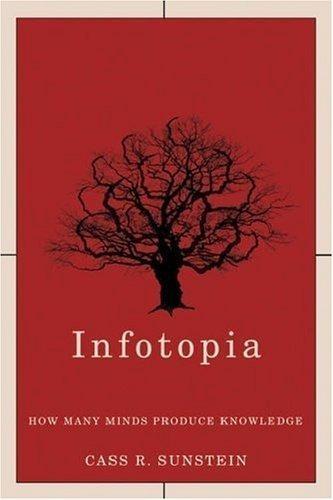
Infotopia: How Many Minds Produce Knowledge
by
Cass R. Sunstein
Published 23 Aug 2006
See Josh Lerner and Jean Tirole, “The Economics of Technology Sharing: Open Source and Beyond,” Journal of Economic Perspectives 19 (2005): 100. 34. Ibid. 254 / Notes to Pages 167–71 35. See Raymond, The Cathedral and the Bazaar. 36. Ibid., 21–22. 37. Here, too, I am grateful to Ethan Zuckerman for clarifying comments. 38. Eric Raymond, “Homesteading the Noosphere,” in The Cathedral and the Bazaar, 67, 81, 110. 39. Ibid., 89. 40. I borrow here from Weber, The Success of Open Source, 185–89. 41. About the Mozilla Foundation, see http://www.mozilla.org/ foundation/. 42. This information was obtained through the Bonsai tool provided by Mozilla.org for keeping track of changes to the code and running a search for changes between the specified times.
…
Why is this? And what lessons can be drawn from the answer to this question for deliberation and information aggregation in general? Many Working Minds / 171 Cathedrals and Bazaars / In a famous and illuminating essay, programmer Eric Raymond distinguished between two models of production: the cathedral and the bazaar.35 On one view, which Raymond himself initially accepted, computer software should be built in the fashion of cathedrals, which are carefully planned in advance, on the basis of specific judgments emerging from individuals or small groups. (The Soviet Union tried to run its economy in cathedral-like fashion, with its careful but doomed five-year plans.)
…
If holders of a Creative Commons License choose, they can forbid alteration of the underlying material; they can also restrict free copying to noncommercial uses. License holders have a range of possible options. The key point is that with the Creative Commons License, people are much freer to copy and distribute the underlying work. A number of record labels now use the Creative Commons License, and various books, including Eric Raymond’s The Cathedral and the Bazaar, do so as well. Lessig’s own book, Free Culture, was released on the Internet under a Creative Commons License. The day after its online release, a popular blogger suggested that people should pick a chapter and make a voice recording of it, a process that was completed in a few days. (The book was rapidly translated into Chinese—by a wiki system.)
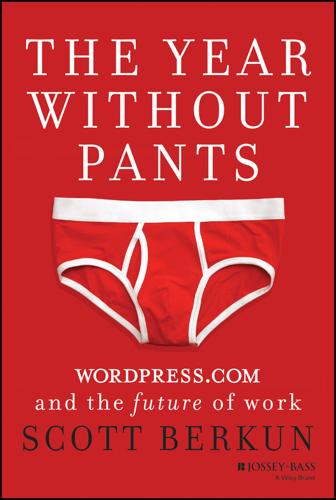
The Year Without Pants: Wordpress.com and the Future of Work
by
Scott Berkun
Published 9 Sep 2013
Most projects run over schedule or over budget, or they get cancelled. When you look around at all the machines, books, gadgets, and applications in our lives, it's amazing they were finished at all. At the heart of the debate over how to overcome the challenges of shipping good things is an idea referenced in the title of Eric Raymond's book The Cathedral and the Bazaar.1 The book, which is about observations on making software, raises a central question that is relevant to all work: Is it better to invest time in making a big masterful plan or instead to start immediately and figure it out as you go? If you imagine the architect of a towering skyscraper or the director of a big-budget motion picture, you probably envision a singular brilliant tyrant who has detailed plans for how everything will be done.
…
We needed to make bigger bets beyond just features, and they had to be features aimed in the right direction. After three months of working together, we planned our first meet-up for Athens, Greece. It'd be there that the two big bets for the rest of my tenure as Team Social's lead would be made. Notes 1 Eric Raymond, The Cathedral and the Bazaar (N.p.: Snowball Publishing, 2010). 2 Toni Schneider, “In Praise of Continuous Deployment: The WordPress.com Story,” May 19, 2010, http://toni.org/2010/05/19/in-praise-of-continuous-deployment-the-wordpress-com-story/. 3 The best book documenting 1990s-era Microsoft software engineering practices is Michael Cusumano, Microsoft Secrets: How the World's Most Powerful Software Company Creates Technology, Shapes Markets and Manages People (New York: Free Press, 1998). 4 Mike Adams built a feature called Publicize, which automatically updated users' Twitter and Facebook accounts every time they published a blog post.
…
The film Revolution OS (http://www.revolution-os.com/) provided the best overview of the history. Karl Fogel's Producing Open Source Software (O'Reilly Media, 2005) was the best encapsulation of the project management view of what good open source projects do. Many habits I witnessed at Automattic are described procedurally in his book. Eric Raymond's The Cathedral and the Bazaar (O'Reilly Media, 2001) I'd read years ago, but reread since the contrast Raymond defined was central to my observations. The greatest contribution to the form this book took came from reading first- and third-person accounts in other genres. I've always admired the work of journalist Ted Conover and reread his fantastic book Newjack (Vintage Books, 2001) about his year working as a prison guard.
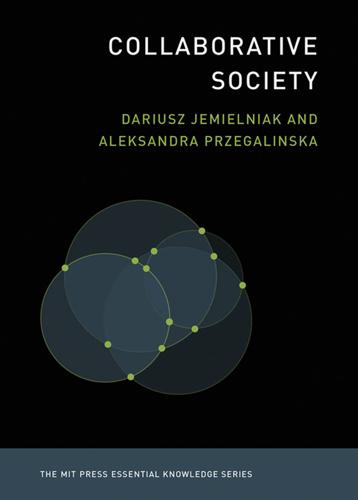
Collaborative Society
by
Dariusz Jemielniak
and
Aleksandra Przegalinska
Published 18 Feb 2020
The ‘Sharing Economy’ in the Sociological Debate,” Sociological Review 66 (2018): 275–288. 54. J. Kennedy, “Conceptual Boundaries of Sharing,” Information, Community, & Society 19 (2016): 461–474. 55. E. S. Raymond, The Cathedral and the Bazaar (O’Reilly, 1999/2004). 56. D. Cheal, The Gift Economy (Routledge, 2015). 57. K. Healy, Last Best Gifts: Altruism and the Market for Human Blood and Organs (University of Chicago Press, 2010), 126. Chapter 3 1. https://perma.cc/GW5R-H5ZQ 2. E. S. Raymond, The Cathedral and the Bazaar (O’Reilly, 1999/2004). 3. M. Bauwens and A. Pantazis, “The Ecosystem of Commons-Based Peer Production and Its Transformative Dynamics,” Sociological Review 66 (2018): 302–319. 4.
…
Platform Capitalism. New York: John Wiley & Sons, 2017. Terranova, T. Network Culture: Cultural Politics for the Information Age. New York: Pluto Press, 2004. More about the internet culture Castells, M. Communication Power. Oxford: Oxford University Press, 2013. Raymond, E. S. The Cathedral and the Bazaar. Cambridge, MA: O’Reilly, 1999/2004. Shifman, L. Memes in Digital Culture. Cambridge, MA: MIT Press, 2014. Zittrain, J. The Future of the Internet and How to Stop It. New Haven: Yale University Press, 2008. More about online activism and inequality Alper, M. Giving Voice: Mobile Communication, Disability, and Inequality.

The Wikipedia Revolution: How a Bunch of Nobodies Created the World's Greatest Encyclopedia
by
Andrew Lih
Published 5 Jul 2010
But his essay is now legend, as it threw the gauntlet down about whether Wikipedia was going to further Nupedia’s model of received authority or take on the distinctly more “anarchic” culture of the open source software world. In his famous essay “The Cathedral and the Bazaar,” software hacker Eric Trolls,_Vandals,_and_Sock_Puppets,_Oh_My_173 Raymond detailed and heralded the working process that produced the wildly popular open source project Linux. It quickly became a must-read for the Internet age. Even those not into software knew that the upstart Linux operating system, written by a distributed set of volunteers around the world, was posing a serious challenge to corporate-developed software like Microsoft’s. “The Cathedral and the Bazaar” was a description of that dynamic, and the essay directly influenced online communities and future thinking about effective, so-called crowdsourcing.
…
Credentials and central control, once considered the most important parameters for generating quality content, now yield to new terms: crowdsourcing, peer production, and open source intelligence. What was once only done top-down is now being viewed bottom-up. Books and essays have addressed the impact of projects freely driven by communities of scattered individuals: The Cathedral and the Bazaar by Eric S. Raymond, The Wisdom of Crowds by James Surowiecki, The Wealth of Networks by Yochai Benkler, The Long Tail by Chris Anderson, Infotopia by Cass R. Sun-stein, and Everything Is Miscellaneous by David Weinberger. This book, however, goes in with a deeper focus on Wikipedia, explaining how it evolved to become the phenomenon it is today, and showing the fascinating community behind the articles and the unique online culture the site has fostered.
…
story_id=11484062. 64. http://en.wikipedia.org/wiki/Wikipedia:Wikipedia_articles _per_population. Chapter 7. TROLLS, VANDALS, AND SOCK PUPPETS, OH MY 65. http://curezone.com/forums/troll.asp. 66. http://nostalgia .wikipedia.org/w/index.php?title=The_Cunctator/How _to_destroy_ Wikipedia& oldid=49164. 67. From “The Cathedral and the Bazaar,” p. 65. 68. http://www.firstmonday.org/Issues/issue8_12/ciffolilli/. 69. http://www.wired.com/wired/archive/13.03/wiki.html. 234_Notes 70. http://en.wikipedia.org/w/wiki.phtml ?title=Albert_Einstein& diff=2380047& oldid= 2380036 . 71. http://wikimania2006.wikimedia.org/wiki/Proceedings:MP1.

Here Comes Everybody: The Power of Organizing Without Organizations
by
Clay Shirky
Published 28 Feb 2008
The most rigorous overview on the topic is Steven Weber’s The Success of open source, Harvard University Press (2004), which provides a detailed description of the development of Linux, as well as an excellent theoretical analysis of what makes open source projects work. Page 242: “The Cathedral and the Bazaar” As noted for chapter 1, Eric Raymond’s seminal 1998 essay on open source software, “The Cathedral and the Bazaar,” is at catb.org/~esr/writings/cathedral-bazaar/. Raymond’s writings on software and other topics is at www.catb.org/~esr/writings. Page 244: Sourceforge Sourceforge, at sourceforge.net, is the largest repository of open source projects; the list of projects sorted by “activity” (a composite metric of various different gauges of programmer and user engagement) is at sourceforge.net/top/mostactive.php.
…
This had simply been less possible in the 1980s; while there were people online from all those places, they weren’t numerous. More is different, and the increased density of people using the internet made the early 1990s a much more fertile time for free software than any previous era. As Eric Raymond put it in “The Cathedral and the Bazaar,” the essay that introduced open source to the world:Linux was the first project to make a conscious and successful effort to use the entire world as its talent pool. I don’t think it’s a coincidence that the gestation period of Linux coincided with the birth of the World Wide Web, and that Linux left its infancy during the same period in 1993-1994 that saw . . . the explosion of mainstream interest in the Internet.
…
Page 17: an architecture of participation Tim O’Reilly’s description of his phrase “architecture of participation” is at www.oreillynet.com/pub/a/oreilly/tim/articles/architecture_of_participation.html. Page 18: a plausible promise Eric Raymond’s seminal 1997 essay on open source software, “The Cathedral and the Bazaar,” is at catb.org/~esr/writings/cathedral-bazaar/ . Raymond’s writings on software and other topics are at www.catb.org/~esr/writings/ . Page 22: Within the Context of No Context, George W. S. Trow, Atlantic Monthly Press (1997). CHAPTER 2: SHARING ANCHORS COMMUNITY Page 25: Birthday Paradox Wikipedia contains a good general guide to the Birthday Paradox, at en.wikipedia.org/wiki/Birthday_paradox.
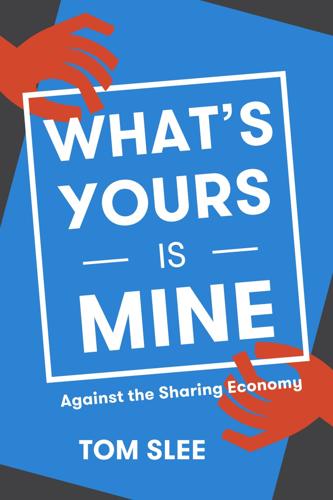
What's Yours Is Mine: Against the Sharing Economy
by
Tom Slee
Published 18 Nov 2015
OPEN-SOURCE SOFTWARE In 1991, Finnish student Linus Torvalds started work “just for fun” on the open-source operating system that was to become Linux, and it quickly became a phenomenon. Linux was trumpeted as a triumph of the loosely-coordinated amateur (that is, non-commercial) efforts of “hackers” (that is, people programming for fun rather than as a job), and in 1998 Eric S. Raymond started his famous essay The Cathedral and the Bazaar this way: Linux is subversive. Who would have thought even five years ago that a world-class operating system could coalesce as if by magic out of part-time hacking by several thousand developers scattered all over the planet, connected only by the tenuous strands of the Internet? 2 The success of Linux and other open source software projects spurred a wave of optimism about a fundamentally new way of creating complex products by relying on networks of peers.
…
Fortune, June 26, 2015. http://fortune.com/2015/06/26/instacart-grocery-stores/. Raphel, Adrienne. “TaskRabbit Redux,” July 222014. http://www.newyorker.com/business/currency/taskrabbit-redux. Rapkin, Mickey. “Uber Cab Confessions.” GQ, February 27, 2014. http://www.gq.com/news-politics/newsmakers/201403/uber-cab-confessions. Raymond, Eric S. “The Cathedral and the Bazaar” First Monday, 3, no. 3 (March 21998). http://www.firstmonday.org/ojs/index.php/fm/article/view/578/499. Reader, Ruth. “Handybook Rebrands as Handy to Help Build Consumer Trust,” September 162014. http://venturebeat.com/2014/09/16/handybook-rebrands-as-handy-to-help-build-consumer-trust/.
…
17 Dellarocas and Wood, “The Sound of Silence in Online Feedback: Estimating Trading Risks in the Presence of Reporting Bias.” 18 Hutt, “The Truth About BBB and Uber”; Huet, “Uber’s ‘F’ Rating At Better Business Bureau Isn’t For Surge Pricing--Just For Unresponsiveness.” 19 Tanz, “How Airbnb and Lyft Finally Got Americans to Trust Each Other.” 20 Sauchelli and Golding, “Hookers Turning Airbnb Apartments into Brothels.” 21 CBC News, “Airbnb Renters Who Trashed Calgary House Used Fake Credit Cards to Fuel Party.” 22 McKenzie, “Airbnb Host Left Violated after Busting Fanny Pack–Clad Male Prostitutes in Her Apartment.” 23 Chesters and Smith, “The Neglected Art of Hitch-Hiking: Risk, Trust and Sustainability.” 24 Fradkin, “Search Frictions and the Design of Online Marketplaces.” 25 Airbnb, “Building Trust with a New Review System.” 26 Nosko and Tadelis, “The Limits of Reputation in Platform Markets: An Empirical Analysis and Field Experiment.” Chapter 7 1 Varian, Farrell, and Shapiro, The Economics of Information Technology: An Introduction. 2 Raymond, The Cathedral and the Bazaar. 3 Benkler, The Wealth of Networks: How Social Production Transforms Markets and Freedom. 4 Benkler, “Coase’s Penguin, or Linux and the Nature of the Firm.” 5 The Linux Foundation, “About Us.” 6 Corbet, Kroah-Hartman, and McPherson, “Who Writes Linux: Linux Kernel Development: How Fast It Is Going, Who Is Doing It, What They Are Doing, and Who Is Sponsoring It.” 7 Asay, “For 50 Percent of Developers, Open Source Is a 9-to-5 Job”; Riehle et al., “Paid vs.
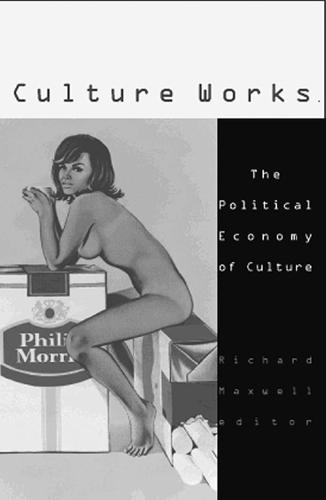
Culture works: the political economy of culture
by
Richard Maxwell
Published 15 Jan 2001
See Thomas Streeter, “‘That Deep Romantic Chasm’: Libertarianism, Neoliberalism, and the Computer Culture,” in Communication, Citizenship, and Social Policy: ReThinking the Limits of the Welfare State, ed. Andrew Calabrese and Jean-Claude Burgelman (Westport, Conn.: Rowan and Littlefield, 1999), 49–64. 34. The essay “The Cathedral and the Bazaar” originally circulated on the Internet. The version quoted here is available at http://www.tuxedo.org/%7Eesr/writings/ cathedral-bazar/cathedral-bazaar/. It has since been published with other material in Eric S. Raymond, The Cathedral and the Bazaar: Musings on Linux and Open Source by an Accidental Revolutionary (Sebastopol, Calif.: O’Reilly and Associates, 1999). 35. Raymond blithely asserts that the motivation of Linux hackers cannot be called altruistic because “this ignores the fact that altruism is itself a form of ego satisfaction for the altruist” (“The Cathedral and the Bazaar”). 36.
…
And others support the movement because of a widespread (and in many cases somewhat adolescent) resentment toward Bill Gates, as if dethroning Gates would magically resolve the many exploitative forces at work in the computer industry. But another component of the movement’s success so far is a set of justifications and self-descriptions that frame the movement in individualist terms. The core piece here is an essay by a movement leader named Eric S. Raymond. His essay called “The Cathedral and the Bazaar” has circulated beyond the Internet into the offices of key business executives and copyright lawyers, influencing policy at companies such as Netscape, Apple, and, by some accounts, IBM. It is important that its arguments are not communitarian; altruism is dismissed out of hand.35 The central rhetorical accomplishment of the piece rather is to frame voluntary labor in the language of the market: the core trope is to portray Linux-style software development as a bazaar, a real-life competitive marketplace, whereas Microsoft-style software production is portrayed as hierarchical and centralized—and thus inefficient—like a cathedral.
…
Raymond blithely asserts that the motivation of Linux hackers cannot be called altruistic because “this ignores the fact that altruism is itself a form of ego satisfaction for the altruist” (“The Cathedral and the Bazaar”). 36. Several more of these aphorisms refer to internal states. For example: “4. If you have the right attitude, interesting problems will find you,” and “18. To solve an interesting problem, start by finding a problem that is interesting to you” (ibid.). 37. The piece does in various ways acknowledge and elaborate the obvious values of cooperation and sharing, and thus has to somehow distance itself from the more simplistic forms of romantic individualism.

The Innovators: How a Group of Inventors, Hackers, Geniuses and Geeks Created the Digital Revolution
by
Walter Isaacson
Published 6 Oct 2014
Author’s interview with Jimmy Wales; Lih, The Wikipedia Revolution, 585. 87. Marshall Poe, “The Hive,” Atlantic, Sept. 2006. 88. Jimmy Wales interview, conducted by Brian Lamb, C-SPAN, Sept. 25, 2005. 89. Author’s interview with Jimmy Wales; Eric Raymond, “The Cathedral and the Bazaar,” first presented in 1997, reprinted in The Cathedral and the Bazaar (O’Reilly Media, 1999). 90. Richard Stallman, “The Free Universal Encyclopedia and Learning Resource” (1999), http://www.gnu.org/encyclopedia/free-encyclopedia.html. 91. Larry Sanger, “The Early History of Nupedia and Wikipedia,” Slashdot, http://beta.slashdot.org/story/56499; and O’Reilly Commons, http://commons.oreilly.com/wiki/index.php/Open_Sources_2.0/Beyond_Open_Source:_Collaboration_and_Community/The_Early_History_of_Nupedia_and_Wikipedia:_A_Memoir. 92.
…
His release of his Linux kernel led to a tsunami of peer-to-peer volunteer collaboration that became a model of the shared production that propelled digital-age innovation.137 By the fall of 1992, a year after its release, Linux’s newsgroup on the Internet had tens of thousands of users. Selfless collaborators added improvements such as a Windows-like graphical interface and tools to facilitate the networking of computers. Whenever there was a bug, someone somewhere stepped in to fix it. In his book The Cathedral and the Bazaar, Eric Raymond, one of the seminal theorists of the open software movement, propounded what he called “Linus’s Law”: “Given enough eyeballs, all bugs are shallow.”138 Peer-to-peer sharing and commons-based collaboration were nothing new. An entire field of evolutionary biology has arisen around the question of why humans, and members of some other species, cooperate in what seem to be altruistic ways.
…
After Wales relocated to San Diego, he launched a directory and ring that served as “kind of a guy-oriented search engine,” featuring pictures of scantily clad women.88 The rings showed Wales the value of having users help generate the content, a concept that was reinforced as he watched how the crowds of sports bettors on his site provided a more accurate morning line than any single expert could. He also was impressed by Eric Raymond’s The Cathedral and the Bazaar, which explained why an open and crowd-generated bazaar was a better model for a website than the carefully controlled top-down construction of a cathedral.89 Wales next tried an idea that reflected his childhood love of the World Book: an online encyclopedia. He dubbed it Nupedia, and it had two attributes: it would be written by volunteers, and it would be free.
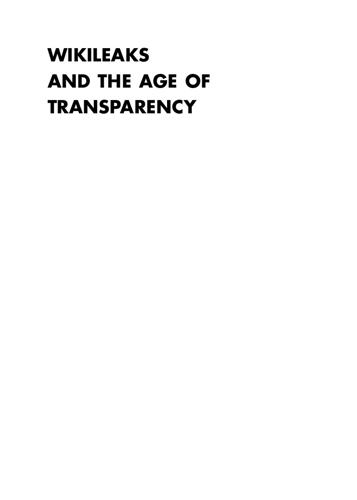
WikiLeaks and the Age of Transparency
by
Micah L. Sifry
Published 19 Feb 2011
I didn’t understand the technical conversations swirling around me at these events, but something about the crowd caught my attention. Was it the surprising number of ponytails on the mostly male programmers, most of whom were T-shirtwearing baby boomers who looked like they would never be caught dead in a suit? Listening to programmer Eric Raymond give a talk on his book The Cathedral and the Bazaar, an early treatise on the value of open methods of collaborative development, I started to feel like I had stumbled upon a lost tribe from the 1960s. The Linux development community, and the larger open source software movement that it was a part of, were in fact a branch of the 1960s counterculture that had run with the idea of personal empowerment into monumental success.3 At the time, Linux was coming into its own as a reliable operating system that was free, unlike the dominant platform, Microsoft Windows.
…
TRID=437. 7 Tim O’Reilly, “What Is Web 2.0: Design Patters and Business Models for the Next Generation of Software,” O’Reilly Media, September 30, 2005, http://oreilly.com/pub/a/web2/archive/what-is-web-20.html. 8 Ellen Miller, “In the Beginning…,” The Sunlight Foundation blog, April 24, 2006, http://sunlightfoundation.com/blog/2006/04/24/in-thebeginning. 193 WIKILEAKS AND THE AGE OF TRANSPARENCY 9 10 11 12 13 14 15 16 17 18 19 20 Dave Green, “The Commons Touch,” The Guardian, February 13, 2003, www.guardian.co.uk/technology/2003/feb/13/egovernment.politics. Greg Hurst, “The MPs who can’t stop talking,” The Sunday Times, February 27, 2006, www.timesonline.co.uk/tol/news/politics/article735429.ece. Eric Raymond, The Cathedral and the Bazaar, www.catb.org/~esr/writings/ cathedral-bazaar/cathedral-bazaar/ar01s04.html. Noam Cohen, “Blogger, Sans Pajamas, Rakes Muck and a Prize,” The New York Times, February 25, 2008, www.nytimes.com/2008/02/25/business/ media/25marshall.html. Josh Marshall, Talking Points Memo, May 1, 2006, www.talkingpoints memo.com/archives/153521.php.
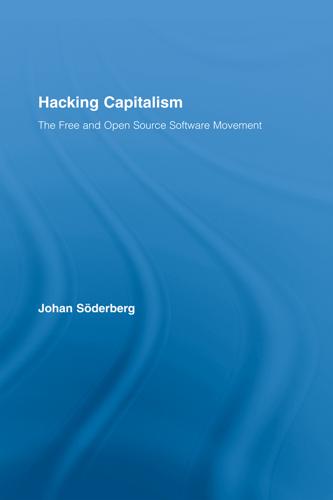
Hacking Capitalism
by
Söderberg, Johan; Söderberg, Johan;
After the Gopher incident, CERN declared that the institute refrained from any claims of ownership over www in the future.26 Many attempts have been made to explain why the development model of hackers works so well, both by the people directly involved in it and more recently by social scientists. One of the most vocal insiders theorising about the hacker movement is Eric Raymond. In an influential article, The Cathedral and the Bazaar, he compares two opposing styles of software development. He contrasts the Cathedral model of conventional, centralised development with the Bazaar model of accessible, open development. The recurring reference of a software application built as a cathedral is Microsoft’s Windows. However, FOSS projects that are written by a tightly knit group of developers who rarely accept contributions from outsiders also qualify as cathedrals.
…
On learning that China was adopting a national version of GNU/Linux, he exclaimed: “Any ‘identification’ between the values of the open-source community and the repressive practices of Communism is nothing but a vicious and cynical fraud”. See Linux Today (November 11, 1999). 29. Eric Raymond, “The Cathedral and the Bazaar.” First Monday vol.3, no.3 (1998), 21. 30. HalloweenDocument I, www.opensource.org/halloweenl.php (accessed 2007-02-08). Halloween Document II, www.opensource.org/halloween/halloween2.php (accessed 2007-02-08). 31. Reported by Greg Michalec, Free Software: History, Perspectives, and Implications, 2002, p.29, available at greg.primate.net/sp/thesis.pdf, (accessed 2007-02-08). 32.
…
Perelman, Michael. “The Political Economy of Intellectual Property”, Monthly Review (January 2003). Ravicher, Daniel. “Facilitating Collaborative Software Development: The Enforceability of Mass-Market Public Software Licenses.” Virginia Journal of Law & Technology (fall 2000). Raymond, Eric. “The Cathedral and the Bazaar.” First Monday vol.3, no.3 (March 1998a). ——— “Homesteading the Noosphere.” First Monday vol.3, no.10 (October 1998b). Samuelson, Pamela. “Regulation of Technologies to Protect Copyrighted Works.” Communication of the ATM 39 (1996). Sassen, Sakia. “The Internet and the Sovereign State: the Role and Impact of Cyberspace on National and Global Governance”, Indiana Journal of Global Legal Studies 5 (1998).
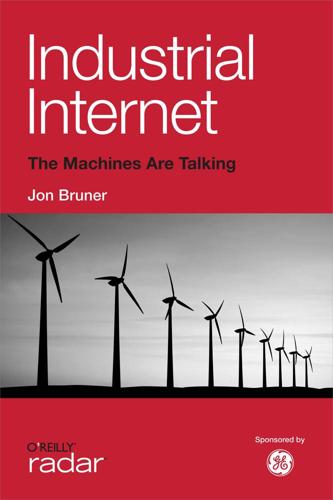
Industrial Internet
by
Jon Bruner
Published 27 Mar 2013
All things open are closed at some level, and all things closed will — if they’re really interesting — be opened at some point.” As he speaks, a prototype box for an OpenXC USB hub sits on the coffee table in his office, with “open-source hardware” and “open-source interface” logos stamped on it. Referring to The Cathedral and the Bazaar [30], Eric Raymond’s seminal essay on open-source software, Prasad adds, “This is our offering to the bazaar.” Among the difficulties in creating truly integrated automotive networks are the long period it takes to refresh the national fleet (it takes about 15 years to refresh 95% of American cars), and the informal means by which they’re maintained and upgraded — in contrast to industrial applications.
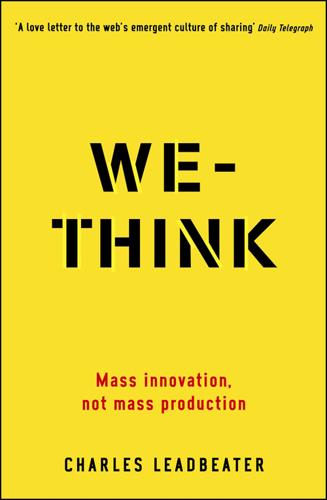
We-Think: Mass Innovation, Not Mass Production
by
Charles Leadbeater
Published 9 Dec 2010
David, ‘From Keeping “Nature’s Secrets” to the Institutionalization of “Open Science”‘, in Rishab Aiyer Ghosh (Ed.), Code (Cambridge, MA/London: MIT Press, 2005) 30 Alessandro Nuvolari, ‘Open Source Software Development: Some Historical Perspectives’, Eindhoven Centre for Innovation Studies Working Paper 03.01 (2003); Koen Frenken and Alessandro Nuvolari, ‘The Early Development of the Steam Engine: An Evolutionary Interpretation Using Complexity Theory’, Eindhoven Centre for Innovation Studies Working Paper 03.15 (2003) Chapter 3 1 Andrew Brown, In the Beginning Was the Worm (Pocket Books, 2003) 2 Eric S. Raymond, The Cathedral and the Bazaar (O’Reilly, 2001) 3 Doc Searls, ‘Making a New World’, in Chris DiBona, Danese Cooper and Mark Stone (Eds), Open Sources 2.0 (O’Reilly, 2006) 4 Glyn Moody, Rebel Code: Linux and the Open Source Revolution (Penguin, 2002) 5 Like many radical innovations Linux is not as revolutionary as it first seems.
…
K., and Venkat Ramaswamy, The Future of Competition (Boston, MA: HBS Press, 2004) Prencipe, Andrea, Andrew Davies and Michael Hobday (Eds), The Business of Systems Integration (Oxford University Press, 2003) Putnam, Robert D., Bowling Alone (New York: Simon & Schuster, 2000) Raymond, Eric S., The Cathedral and the Bazaar (Cambridge, MA: O’Reilly, 2001) Rheingold, Howard, Smart Mobs (Perseus Books, 2002) Rivlin, Gary, ‘Leader of the Free World’, Wired, November 2003, pp. 153–54 Roberts, John, The Modern Firm (Oxford University Press, 2004) Rosen, Jay, ‘Journalism Is Itself a Religion’, Production Values, Demos, http://journalism.nyu.edu/pubzone/ weblogs/pressthink/2003/10/16/radical_ten.html (2006) Rosen, Jay, ‘What’s Radical About the Weblog Form in Journalism?’
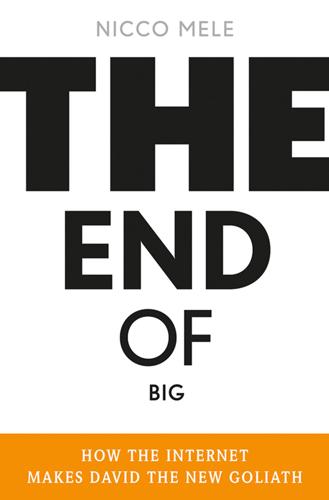
The End of Big: How the Internet Makes David the New Goliath
by
Nicco Mele
Published 14 Apr 2013
. … All you have to do to serve them well is build a minimal infrastructure allowing them to get together and work things out for themselves. Any additional features are almost certainly superfluous and could even be damaging.35 This way of thinking in software design has a long pedigree—back to the “scratch your own itch” of Eric Raymond’s The Cathedral and the Bazaar, but more recently in the best-selling The Lean Startup, whose core admonition is to arrive at the minimum viable product as quickly as possible. It’s a compelling vision for running a software company or even an online services company. But does it work as an approach to government? Not so much.
…
As a result, information is flowing more freely into the public arena, powered by seemingly unstoppable networks of people all over the world cooperating to share vital data and prevent its suppression.”34 At the heart of this trend is the idea—foundational to our nerd oligarchs—that information should be freely available to those who seek to use it, and the open-source approach that such transparency and openness produces not only better software but also better solutions to many problems. Eric Raymond, in his landmark essay that lays out a new sort of programming philosophy, “The Cathedral and the Bazaar,” uses the expression “given enough eyeballs, all bugs are shallow” to describe the power of transparency to bring about accountability. In a computer program, a “bug” is a problem. Closed-source computer programs do not allow anyone except the creators to read their code. Open-source computer programs allow anyone to read their code.

WTF?: What's the Future and Why It's Up to Us
by
Tim O'Reilly
Published 9 Oct 2017
It had become the platform on which many of the world’s great websites—at the time, most notably Amazon and Google—were being built. But it was also reshaping the very way that software was being written. In February 1997, at the Linux Kongress in Würzburg, Germany, hacker Eric Raymond delivered a paper, called “The Cathedral and the Bazaar,” that electrified the Linux community. It laid out a theory of software development drawn from reflections on Linux and on Eric’s own experiences with what later came to be called open source software development. Eric wrote: Who would have thought even five years ago that a world-class operating system could coalesce as if by magic out of part-time hacking by several thousand developers scattered all over the planet, connected only by the tenuous strands of the Internet?
…
But you are a “beta tester”—someone who tries out continually evolving, unfinished software and gives feedback—at a scale never before imagined. Internet software developers constantly update their applications, testing new features on millions of users, measuring their impact, and learning as they go. Eric saw that something was changing in the way software was being developed, but in 1997, when he first delivered “The Cathedral and the Bazaar,” it wasn’t yet clear that the principles he articulated would spread far beyond free software, beyond software development itself, shaping content sites like Wikipedia and eventually enabling a revolution in which consumers would become co-creators of services like on-demand transportation (Uber and Lyft) and lodging (Airbnb).
…
I once asked Ed Schlossberg, and he didn’t remember either. 5 Mark Twain is reputed to have said: “History Does Not Repeat Itself, but It Rhymes,” Quote Investigator, retrieved March 27, 2017, http://quoteinvestigator.com/2014/01/12/history-rhymes/. 6 free as in freedom: Sam Williams, Free as in Freedom: Richard Stallman’s Crusade for Free Software (Sebastopol, CA: O’Reilly, 2002). See also Richard Stallman, “The GNU Manifesto,” retrieved March 29, 2017, http://www.gnu.org/gnu/manifesto.en.html. 8 “The Cathedral and the Bazaar”: Originally published at http://www.unterstein. net/su/docs/CathBaz.pdf. Book version: Eric S. Raymond, The Cathedral & the Bazaar (Sebastopol, CA: O’Reilly, 2001). 9 “Hardware, Software, and Infoware”: Tim O’Reilly, “Hardware, Software, and Infoware,” in Open Sources: Voices from the Open Source Revolution (Sebastopol, CA: O’Reilly, 1999), available online at http://www.oreilly.com/open book/opensources/book/tim.html. 12 sales of 250,000 units in the first five years: Edwin D.
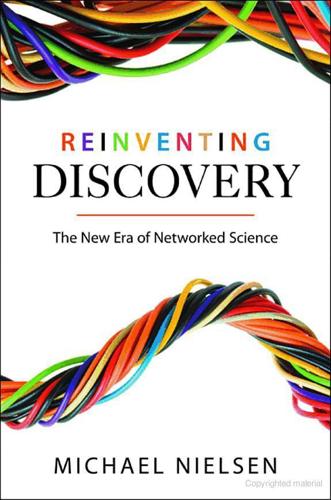
Reinventing Discovery: The New Era of Networked Science
by
Michael Nielsen
Published 2 Oct 2011
I also recommend taking a good look at GitHub (http://github.com), which is the most important current locus for open source work. A good overview of open source is Steven Weber’s The Success of Open Source [235]. Its only drawback is that it’s becoming a little dated (2004), but there is much in the book that is relatively timeless. Going even further back, there is Eric Raymond’s famous essay “The Cathedral and the Bazaar” [178]. Raymond’s essay is what first got me (and many others) interested in open source, and it remains well worth reading. Yochai Benkler’s insightful “Coase’s Penguin, or, Linux and The Nature of the Firm” [12] and The Wealth of Networks [13] have strongly influenced much thinking about open source, especially in the academic community.
…
Rampadarath, M. A. Garrett, G. I. G. Józsa, T. Muxlow, T. A. Oosterloo, Z. Paragi, R. Beswick, H. van Arkel, W. C. Keel, and K. Schawinski. Hanny’s Voorwerp: Evidence of AGN activity and a nuclear starburst in the central regions of IC 2497. eprint arXiv: 1006.4096, 2010. [178] Eric S. Raymond. The Cathedral and the Bazaar. Published online and reprinted in [179]. http://www.catb.org/~esr/writings/cathedral-bazaar/cathedral-bazaar/. [179] Eric S. Raymond. The Cathedral and thBazaa: Musings on Linux and Open Source by an Accidental Revolutionary. Sebastopol, CA: O’Reilly Media, 2001. [180] Rosie Redfield.
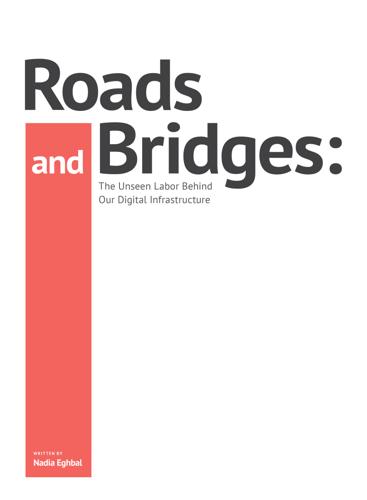
Roads and Bridges
by
Nadia Eghbal
One organization might release its source code to the public, but only accept changes from a couple of contributors. Another organization might require that the code is developed in public and accept changes from anyone, so that more people could take part in the process. In 1997, Raymond wrote an influential essay called The Cathedral and the Bazaar (later published as a book in 1999) which explored these styles. Today, open source has become a popular software practice for many reasons, in terms of both efficiency and cost. It’s also how much of digital infrastructure gets built. We’ve discussed how making this software more freely available has benefitted all of society, but open source has benefits for its creators, as well.

Coding Freedom: The Ethics and Aesthetics of Hacking
by
E. Gabriella Coleman
Published 25 Nov 2012
They knew, however, that creating a new image for open source would “require marketing techniques (spin, image building, and re-branding)” (Raymond 1999, 211)—a branding effort that some of the participants were more than willing to undertake. Eric Raymond, who had recently written what would become an influential article on free software, “The Cathedral and the Bazaar,” took it on himself to become the mouthpiece and icon for this new open-source marketing strategy. Although Raymond’s goal was to bring free software into the business world, like Stallman, he was also deeply engaged in the politics of cultural revaluation (Coleman 1999). While Stallman felt that a certain type of commercial incursion (in the form of intellectual property law) threatened the values of hacker culture, Raymond wanted to bring open source to the market to improve the hacker cultural experience.
…
Chicago: University of Chicago Press. Radcliffe-Brown, A. R. 1952. Structure and Function in Primitive Society. New York: Free Press. Ratto, Matt. 2005. Embedded Technical Expression: Code and the Leveraging of Functionality. Information Society 21 (3): 205–13. Raymond, Eric S. 1999. The Cathedral and the Bazaar: Musings on Linux and Open Source by an Accidental Revolutionary. Sebastopol, CA: O’Reilly. Reagle, Joseph Michael. 2010. Good Faith Collaboration: The Culture of Wikipedia. Cambridge, MA: MIT Press. Rheingold, Howard. 1993. The Virtual Community: Homesteading on the Electronic Frontier.

How Not to Network a Nation: The Uneasy History of the Soviet Internet (Information Policy)
by
Benjamin Peters
Published 2 Jun 2016
Hoffmann, The Dead Hand: The Untold Story of the Cold War Arms Race and Its Dangerous Legacy (New York: Random House, 2009), 150–154, 364–369, 422–423, 477. 8. Ibid., 153–154. 9. For sample references, see Kevin Kelly, Out of Control: The New Biology of Machines, Social Systems, and the Economic World, Fourth Edition (Reading, MA: Addison Wesley, 2004), chap. 4; Eric Raymond, The Cathedral and the Bazaar: Musings on Linux and Open Source by an Accidental Revolutionary (New York: O’Reilly, 1999); and Leon Trotsky, Platform of the Joint Opposition (1927) (London: New Park Publications, 1973), especially “The Agrarian Question and Social Construction.” 10. Manuel Castells, End of the Millennium: The Information Age—Economy, Society, and Culture (Malden, MA: Blackwell, 1998), 5–68; Lawrence Lessig, Code and Other Laws of Cyberspace (New York: Basic Books, 1999), 3–8. 11.
…
Accessed April 15, 2015, http://digitalcommons.law.yale.edu/cgi/viewcontent.cgi?article=1625&context=fss_papers. Raeff, Marc. The Well-Ordered Police State: Social and Institutional Change through Law in the Germanies and Russia, 1600–1800. New Haven: Yale University Press, 1983. Raymond, Eric. The Cathedral and the Bazaar: Musings on Linux and Open Source by an Accidental Revolutionary. New York: O’Reilly, 1999. Reese, Roger R. The Soviet Military Experience: A History of the Soviet Army, 1917–1991. New York: Routledge, 2000. Remnick, David. “Soviet Union’s Shadow Economy: Bribery, Barter, and Black Market.”
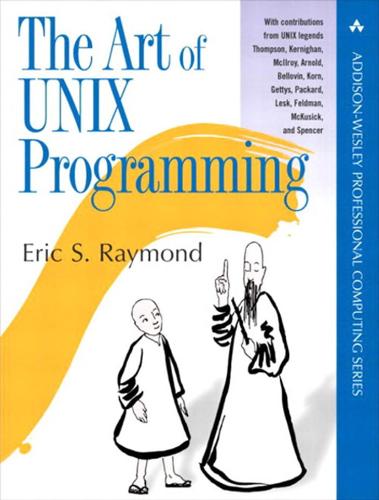
The Art of UNIX Programming
by
Eric S. Raymond
Published 22 Sep 2003
Volunteer efforts were self-directed by the people most strongly motivated to solve problems. From these choices many good things flowed. Indeed, the technique of open-source development evolved as an unconscious folk practice in the Unix community for more than a quarter century, many years before it was analyzed and labeled in the late 1990s (See The Cathedral and the Bazaar [Raymond01] and Understanding Open Source Software Development [Feller-Fitzgerald]. In retrospect, it is rather startling how oblivious we all were to the implications of our own behavior. Several people came very close to understanding the phenomenon; Richard Gabriel in his “Worse Is Better” paper from 1990 [Gabriel] is the best known, but one can find prefigurations in Brooks [Brooks] (1975) and as far back as Vyssotsky and Corbató's meditations on the Multics design (1965).
…
A summary is available on the Web. [Ravenbrook] The Memory Management Reference. Available on the Web. [Raymond96] Eric S. Raymond. The New Hacker's Dictionary. 3rd Edition. 1996. ISBN 0-262-68092-0. MIT Press. 547pp.. Available on the Web at Jargon File Resource Page. [Raymond01] Eric S. Raymond. The Cathedral and the Bazaar. 2nd Edition. 1999. ISBN 0-596-00131-2. O'Reilly & Associates. 240pp.. [Reps-Senzaki] Paul Reps and Nyogen Senzaki. Zen Flesh, Zen Bones. 1994. Shambhala Publications. ISBN 1-570-62063-6. 285pp.. A superb anthology of Zen primary sources, presented just as they are. [Ritchie79] Dennis M.
…
During a second phase of involvement beginning in 1999, Keith rewrote the X rendering code, producing a more powerful but dramatically smaller implementation suitable for handheld computers and PDAs. Eric S. Raymond has been writing Unix software since 1982. In 1991 he edited The New Hacker's Dictionary, and has since been studying the Unix community and the Internet hacker culture from a historical and anthropological perspective. In 1997 that study produced The Cathedral and the Bazaar, that helped (re)define and energize the open-source movement. He presently maintains more than thirty open-source software projects and about a dozen key FAQ documents. Henry Spencer was a leader among the first wave of programmers to embrace Unix when it escaped from Bell Labs in the mid-1970s.
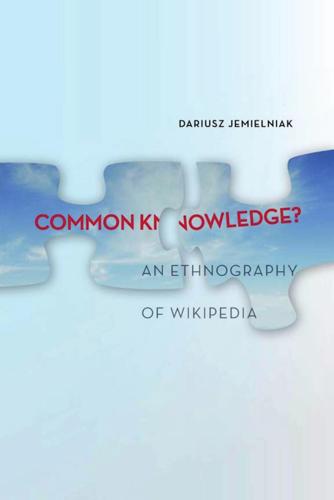
Common Knowledge?: An Ethnography of Wikipedia
by
Dariusz Jemielniak
Published 13 May 2014
MIS Quarterly—Management Information Systems, 35(3), 613–627. Raymond, E. S. (1998). Homesteading the noosphere. First Monday, 3(10). Retrieved from http://firstmonday.org/htbin/cgiwrap/bin/ojs/index.php/fm/article/view Article/621/542 2 7 0 R e f e r e n c e s Raymond, E. S. (1999). The cathedral and the bazaar. Knowledge, Technology and Policy, 12(3), 23–49. Raymond, E. S. (1999/2004). The cathedral and the bazaar. Beijing, China: O’Reilly. Rayton, D. (1972). Shop floor democracy in action. Nottingham, England: Russell Press. Read, B. (2007, March 9). Wikipedia fights bogus credentials. The Chronicle of Higher Education blog. Retrieved from http://chronicle.com/blogs/wiredcampus/wiki pedia-fights-bogus-credentials/2888 Readings, B. (1996).
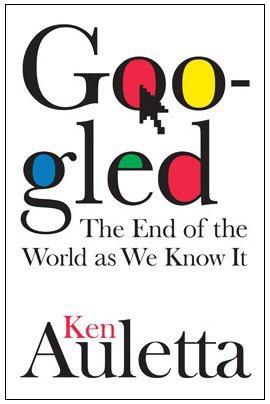
Googled: The End of the World as We Know It
by
Ken Auletta
Published 1 Jan 2009
But Google also succeeded because it forged teams of engineers who were not territorial, who formed a network, communicating and sharing ideas, constantly trying them out in beta tests among users, relying on “the wisdom of crowds” to improve them. Building communities of engineers and hackers and users was the ethos they shared. They believed it was virtuous to share, for it embraced the construct framed by Eric Steven Raymond in a paper originally presented at a conference of Linux developers in 1997, “The Cathedral and the Bazaar.” Instead of a solitary engineering wizard crafting software as if it were a cathedral and releasing it when perfected, Raymond argued that the Linux model was more like “a great babbling bazaar” that would ignite the creativity of communities of engineers and users. This ethos was one that infected Page and Brin and Google engineers, led them to the clarity of a free search engine designed to serve users.
…
“: author interview with Marissa Mayer, November 4, 2008. 108 The stock reached $108.31 ... to its employees: SEC Form S-1, August 2004. 109 Even Bonnie Brown: Stefanie Olsen, CNET News, January 23, 2008. 110 ”We began as a technology company“: Google IPO, SEC form 3-1, August 2004. 110 two hundred million dollars in 2003: author interview with Benjamin Schachter, February 15, 2008. 110 ”In a second“: author interview with Matt Cutts, March 26, 2008. 111 ”suggests that while Microsoft“: John Markoff, ”Why Google Is Peering Out, at Microsoft,“ New York Times, May 3, 2004. 111”we believe that our user focus“: Google IPO, August 2004. 112 ”Being less experienced“: author interview with Larry Page, March 25, 2008. 112. ”A lot of it is common sense“: author interview with Sergey Brin, September 18, 2008. 112 ”They wanted to replicate the Stanford culture“: author interview with Ram Shriram, June 12, 2008. 112 ”They predicted things that did not make sense to me“: author interview with Urs Hölzle, September 10, 2007. 112 ”Their clear, coherent point of view“: author interview with Terry Winograd, September 25, 2007. 112”The number of times they made me change my opinion“: author interview with Rajeev Motwani, October 12, 2007. 113 the construct framed by Eric Steven Raymond: Eric Steven Raymond, ”The Cathedral and the Bazaar,“ found at http:/wwwcatb.org/-esr/writings/cathedral-bazaar/. 113 Page and Brin actually have more experience: author interview with Eric Schmidt, September 12, 2007. 113 ”quintessential Montessori kids“: author interview with Marissa Mayer, August 21, 2007. 114 ”question everything“: Larry Page speech at University of Michigan, 2005. 114 ”There’s kind of a strength in the duo“: author interview with Bill Campbell, October 8, 2007. 114 ”We agree eighty to ninety percent of the time“: author interview with Sergey Brin, March 26, 2008. 114 ”If we both feel the same way ... we’re probably right“: author interview with Larry Page, March 25, 2008. 114 strength ”to be different“: author interview with Susan Wojcicki, September 10, 2007. 114 ”having a mental sparring partner“: author interview with Jen Fitzpatrick, September 12, 2007. 114 ”Having the two of them being completely in sync“: author interview with Omid Kordestani, September 12, 2007. 114 ”to force a conversation“: author interview with Eric Schmidt, September 12, 2007. 115 ”Some companies would be worried“: author interview with Sheryl Sandberg, October 11, 2007. 115 ”people saw values we believed in“: author interview with Craig Newmark, January 11, 2008. 115 the reason the troika ”works is that whoever you go to“: author interview with Sheryl Sandberg, October 11, 2007. 116 ”Eric is the leader for the company“: author interview with Sergey Brin, October 11, 2007. 116 ”I can’t imagine“: author interview with Bill Campbell, October 8, 2007. 116 ”A balanced appreciation“: author interview with Dan Rosensweig, February 27, 2008. 116 ”It borders on insulting“: author interview with Elliot Schrage, October 12, 2007. 116 ”catcher“: author interviews with Eric Schmidt, September 12, 2007, and October 9, 2007. 116 At the press lunch: post-Zeitgeist lunch attended by author, October 11, 2007. 117 ”the best business partner“: annual Google shareholder meeting attended by author, May 10, 2007. 117 ”Eric is the person who said“: author interview with Sheryl Sandberg, October 11, 2007. 117 ”I’ve become a huge cheerleader“: author interview with Michael Moritz, March 31, 2009. 118 an incident at the 2005 World Economic Forum: author interview with Andrew Lack, October 4, 2007. 118 ”no recollection of the specific incident“: e-mail from Arthur Sulzberger, Jr., April 29, 2009. 118 ”Schmidt confirmed Lack’s account“: author interview with Eric Schmidt, April 1, 2009. 118 ”Here’s the part you don’t see“: author interview with Bill Campbell, April 1, 2009. 119 ”We’re smart guys“: author interview with Terry Winograd, September 25, 2007. 120 ”privacy concerns“: Google IPO, August 2004.
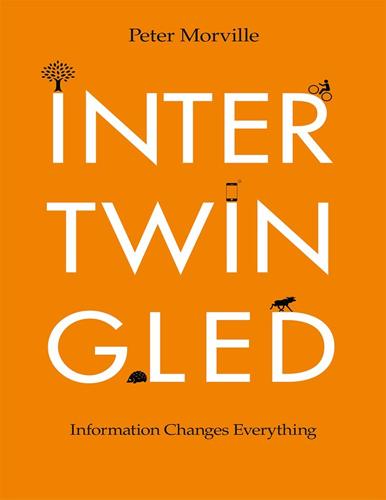
Intertwingled: Information Changes Everything
by
Peter Morville
Published 14 May 2014
lxxxii Mistakes Were Made (But Not By Me) by Carol Tavris et al. (2007), p.32. lxxxiii Weick (2001), p.27. lxxxiv Gamestorming by Dave Gray, Sunni Brown, and James Macanufo (2010). lxxxv Antifragile: Things That Gain from Disorder by Nassim Nicholas Taleb (2012). lxxxvi Weick (2001), p.371. lxxxvii The Cathedral and the Bazaar by Eric Raymond (1999), p.73. lxxxviii What is the Theory of Your Firm? by Todd Zenger (2013). lxxxix The Back of the Napkin by Dan Roam (2008), p.120. xc What is Strategy? by Michael Porter (1996). xci Ramachandran (2011), p.xiv. xcii Ramachandran (2011), p.105. xciii The Corporate Culture Survival Guide by Edgar Schein (1999), p.27.

Designing for the Social Web
by
Joshua Porter
Published 18 May 2008
They don’t see it as trouble to use software that isn’t perfect, in fact, they want to help make it perfect. 12 http://corkd.com 13 http://www.simplebits.com/notebook/2006/05/30/update2.html 55 56 DESIGNING FOR THE SOCIAL WEB Release Early, Release Often Eric Raymond, in the classic open-source manifesto The Cathedral and the Bazaar, says that open-source succeeds in big part by adopting a strategy of “release early and often.”14 This has several effects: . Builds goodwill . Shows people that you’re there and improving . Gets people coming back often . Lets you fail fast A major benefit of fast iteration is you also fail fast.

The Zero Marginal Cost Society: The Internet of Things, the Collaborative Commons, and the Eclipse of Capitalism
by
Jeremy Rifkin
Published 31 Mar 2014
“History of the OSI,” Open Source Initiative, September 2012, http://opensource.org/history (accessed June 13, 2013). 11. Richard Stallman, “Why ‘Open Source’ Misses the Point of Free Software,” Communications of the ACM 52(6) (2009): 31. 12. Ibid. 13. Ibid., 33. 14. Eric Steven Raymond, “The Cathedral and the Bazaar,” UnderStone.net, August 22, 2001 http://www.unterstein.net/su/docs/CathBaz.pdf (accessed June 13, 2013). 15. Jeremy Rifkin, The Empathic Civilization (New York: Penguin Books, 2009), 266. 16. Elizabeth L. Eisenstein, The Printing Revolution in Early Modern Europe (Cambridge: Cambridge University Press, 1983), 95. 17.
…
Polanyi, Karl. The Great Transformation: The Political and Economic Origins of Our Time. Boston: Beacon Press, 1944. Randall, John Herman Jr. The Making of the Modern Mind: A Survey of the Intellectual Background of the Present Age. Cambridge, MA: Riverside Press, 1940. Raymond, Eric. The Cathedral and the Bazaar: Musing on Linux and Open Source by an Accidental Revolutionary. Sebastopol, CA: O’Reilly Media, 2001. Rifkin, Jeremy. Biosphere Politics. New York: Crown, 1991. Rifkin, Jeremy. The Age of Access. New York: Tarcher/Putnam, 2000. Rifkin, Jeremy. The Biotech Century. New York: Tarcher/Putnam, 1998.

The Secret War Between Downloading and Uploading: Tales of the Computer as Culture Machine
by
Peter Lunenfeld
Published 31 Mar 2011
See Linus Torvalds and David Diamond, Just for Fun: The Story of an Accidental Revolutionary (New York: HarperCollins, 2001). 27 . Computer and social scientist Paul Dourish was the first to tell me the joke that “Linux is free only if the value of your time is zero.” 28 . Eric S. Raymond, The Cathedral and the Bazaar: Musings on Linux and Open Source by an Accidental Revolutionary (Cambridge, MA: O’Reilly, 1999), available at <http://www.catb.org/~esr/writings/cathedral-bazaar/>. 29 . In the corporation’s own words, from “Ten Things Google Has Found to Be True,” available at <http://www.google.com/intl/en/corporate/tenthings.html>: PageRank™ “evaluates all of the sites linking to a web page and assigns them a value, based in part on the sites linking to them.

Geek Sublime: The Beauty of Code, the Code of Beauty
by
Vikram Chandra
Published 7 Nov 2013
These volunteers must cooperate to produce viable programs; yet it is within open source that programmers most fiercely pledge allegiance to the legacy of the early neckbeards. And so Linus Torvalds, the “benevolent dictator” of Linux, dismissed the makers of a rival operating system as “a bunch of masturbating monkeys”; and so, Eric S. Raymond, author of The New Hacker’s Dictionary and The Cathedral and the Bazaar, once told an interviewer proudly, “I’m an arrogant son of a bitch,” and refused a hapless Microsoft headhunter’s form-letter inquiry with an e-mail that ended, “On that hopefully not too far distant day that I piss on Microsoft’s grave, I sincerely hope none of it will splash on you.”43 These postures and attitudes are common enough that some programmers have found it necessary to protest against them, as in a recent blog post by Derick Bailey titled “Dear Open Source Project Leader: Quit Being a Jerk.”
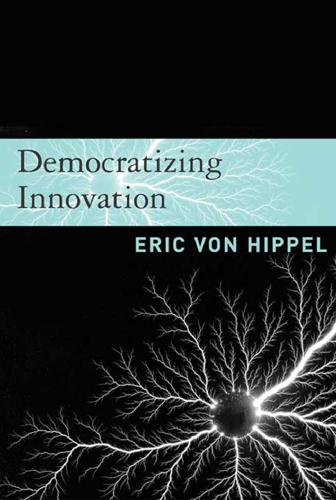
Democratizing innovation
by
Eric von Hippel
Published 1 Apr 2005
Working paper, Vienna University of Economics. Punj, G., and D. W. Stewart. 1983. “Cluster Analysis in Marketing Research: Review and Suggestions for Application.” Journal of Marketing Research 20, May: 134–148. Raymond, E., ed. 1996. The New Hacker’s Dictionary, third edition. MIT Press. Raymond, E. 1999. The Cathedral and the Bazaar. O’Reilly. Redmond, W. H. 1995. “An Ecological Perspective on New Product Failure: The Effects of Competitive Overcrowding.” Journal of Product Innovation Management 12: 200–213. Riggs, W., and E. von Hippel. 1994. “Incentives to Innovate and the Sources of Innovation: The Case of Scientific Instruments.”
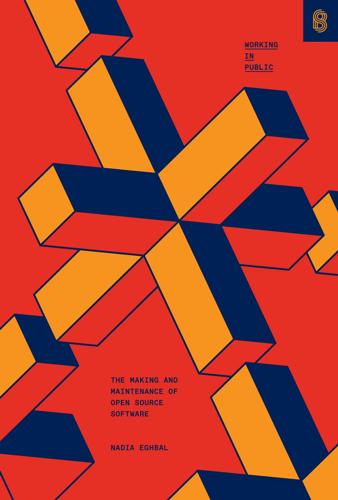
Working in Public: The Making and Maintenance of Open Source Software
by
Nadia Eghbal
Published 3 Aug 2020
He’s known for his insistence on distinguishing between “free software” and “open source software,” a bizarre phobia of plants, and showing up uninvited to presentations to grill unwilling lecturers on free software trivia. Eric S. Raymond is part of a group of programmers who embraced the term “open source,” hoping to distance themselves from free software’s ideological positioning and make the idea seem more commercially friendly. His 1997 book-length essay, “The Cathedral and the Bazaar: Musings on Linux and Open Source by an Accidental Revolutionary,” makes a compelling case for the benefits of open source software. The essay argues that developers will find more software bugs when the process is highly participatory (like a “bazaar”), compared to when it’s restricted to a smaller group of developers (like a “cathedral”).
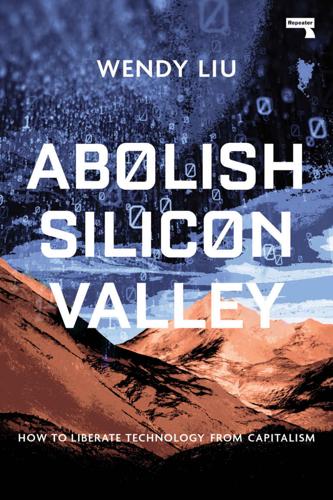
Abolish Silicon Valley: How to Liberate Technology From Capitalism
by
Wendy Liu
Published 22 Mar 2020
At first, I didn’t really know what that meant — I just knew that I didn’t have to pay to use the software — but gradually I understood that it was more than a pricing model: it was a cultural movement. Soon enough, I fell down the open source rabbit hole, devouring whatever books and essays I could get my hands on: Richard Stallman’s Free Software, Free Society; Neal Stephenson’s In the Beginning Was the Command Line; Eric S. Raymond’s The Cathedral and the Bazaar; Lawrence Lessig’s Free Culture. I scrutinised dictionaries of jargon so I could decipher the numerous flame wars debating the finer points of GPLv2 vs GPLv3, vim vs Emacs, tabs vs spaces. And I decided to embrace open source in my personal life, starting with my operating system. Windows was insecure, and macOS was proprietary, but Linux was the primary choice of the kind of programmer I was trying to emulate.

The Great Wave: The Era of Radical Disruption and the Rise of the Outsider
by
Michiko Kakutani
Published 20 Feb 2024
In 1997, the computer programmer Eric Raymond coined a metaphor to differentiate between two types of software development: “the cathedral” being the traditional approach whereby a select group diligently works on a product (like Microsoft Office), fixing bugs before releasing their creation to the world; and “the bazaar” or “open source” method, whereby a product (like Linux) is developed collaboratively on the web, with thousands of people finding and fixing bugs. These two terms—“the cathedral” and “the bazaar”—would also become larger metaphors for old-fashioned top-down dynamics versus more decentralized, bottom-up ones. * * * — The democratic ideals of early digital pioneers were eclipsed as Silicon Valley became a glittering magnet for venture capital, and a handful of start-ups grew into vast multinational companies that reach across the globe.

The Code: Silicon Valley and the Remaking of America
by
Margaret O'Mara
Published 8 Jul 2019
Two decades later, open-source software evangelist Eric Raymond famously framed the divide as “the cathedral” versus “the bazaar.”25 As the personal computer revolution gained speed and financial velocity, and as Jobs and Gates morphed from oddball kids into two of the richest and most celebrated business leaders in the world, the space between the cathedral and the bazaar—and the entrepreneurs and the idealists, the mercenaries and the missionaries—grew even wider. * * * — Boys had been tinkering with electronics since the dawn of the radio age. The hackers might have stayed in their basements and bedrooms if the enabling technology of the mass-produced microprocessor hadn’t come on the scene, and a cadre of ferociously innovative chip companies hadn’t created new markets for computerizing nearly everything.
…
Bill Gates, “An Open Letter to Hobbyists,” Homebrew Computer Club, Newsletter 2, no. 1 (January 31, 1976), 2, Box 1, M1141, Liza Loop Papers, SU. 22. Stephen Manes and Paul Andrews, Gates (New York: Touchstone/Simon & Schuster, 1993), 58–60. 23. Bill Gates, The Road Ahead (New York: Random House, 1995), 44; Manes and Andrews, Gates, 63–71. 24. Manes and Andrews, Gates, 81. 25. Eric S. Raymond, The Cathedral and the Bazaar: Musings on Linux and Open Source by an Accidental Revolutionary (San Francisco: O’Reilly Media, 2001). 26. Christopher Evans, The Micro Millennium (New York: Viking, 1979), 67. CHAPTER 12: RISKY BUSINESS 1. Ian Matthews, “Commodore PET History,” Commodore.ca, February 2003, https://www.commodore.ca/commodore-products/commodore-pet-the-worlds-first-personal-computer/, archived at https://perma.cc/WY6J-UXT5. 2.
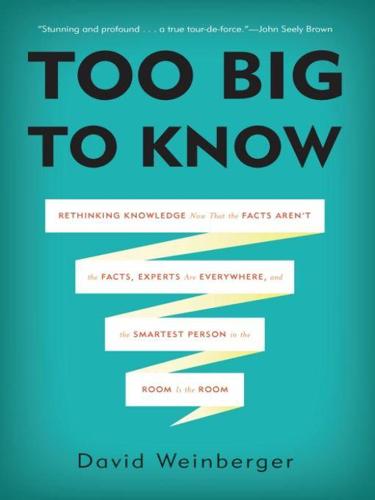
Too Big to Know: Rethinking Knowledge Now That the Facts Aren't the Facts, Experts Are Everywhere, and the Smartest Person in the Room Is the Room
by
David Weinberger
Published 14 Jul 2011
One guess at the number of developers who worked on Windows 7 is 1,000, based on a post by Steve Sinofsky at the “Engineering Windows 7” blog on August 17, 2008 (http://blogs.msdn.com/b/e7/archive/2008/08/18/windows_5f00_7_5f00_team.aspx). But it is extremely difficult to do an apples-to-apples comparison, so to speak. 17 Eric Steven Raymond, “The Cathedral and the Bazaar,” http://catb.org/~esr/writings/homesteading (May 1997). Raymond later published a book by the same name. 18 “The Scalability of Linus,” Slashdot, July 23, 2010, http://linux.slashdot.org/story/10/07/23/123209/The-Scalability-of-Linus? 19 See http://www.debian.org/devel/constitution as well as Mathieu O’Neil, Cyberchiefs: Autonomy and Authority in Online Tribes (Pluto Press, 2009), p. 132. 20 O’Neil, Cyberchiefs. 21 Interview with Noel Dickover, February 25, 2011. 22 See http://www.fantasypumpkins.com/. 23 Peter J.
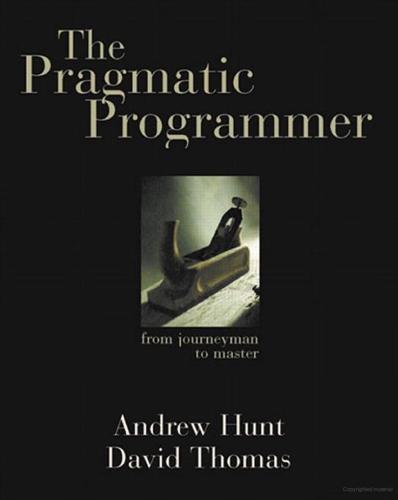
The Pragmatic Programmer
by
Andrew Hunt
and
Dave Thomas
Published 19 Oct 1999
[URL 51] Netscape Source Code ⇒ www.mozilla.org The development source of the Netscape browser. [URL 52] The Jargon File ⇒ www.jargon.org Eric S. Raymond Definitions for many common (and not so common) computer industry terms, along with a good dose of folklore. [URL 53] Eric S. Raymond's Papers ⇒ www.tuxedo.org/~esr Eric's papers on The Cathedral and the Bazaar and Homesteading the Noo-sphere describing the psychosocietal basis for and implications of the Open Source movement. [URL 54] The K Desktop Environment ⇒ www.kde.org From their Web page: "KDE is a powerful graphical desktop environment for Unix workstations. KDE is an Internet project and truly open in every sense."
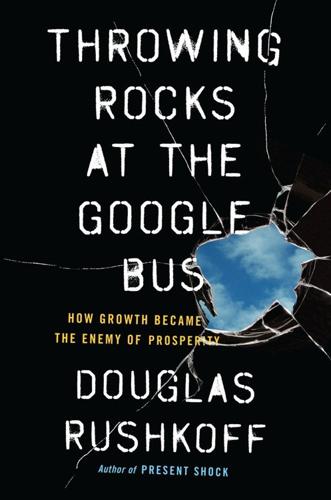
Throwing Rocks at the Google Bus: How Growth Became the Enemy of Prosperity
by
Douglas Rushkoff
Published 1 Mar 2016
Telis Demos, Chris Dieterich, and Yoree Koh, “Twitter Shares Take Wing with Smooth Trading Debut,” Wall Street Journal, November 6, 2013. 5. John Hagel et al., Foreword, “The Shift Index 2013: The 2013 Shift Index Series,” Deloitte, 2013. Chapter One: Removing Humans from the Equation 1. Eric S. Raymond, The Cathedral and the Bazaar (Sebastopol, Calif.: O’Reilly Media, 1999). 2. Women of the late Middle Ages in Europe were taller than at any other period until the 1970s. Bernard Lietaer and Stephen Belgin, New Money for a New World (Boulder, Colo.: Qiterra Press: 2011). 3. Douglas Rushkoff, Life Inc.: How Corporations Conquered the World, and How We Can Take It Back (New York: Random House, 2009), 8. 4.

The Second Machine Age: Work, Progress, and Prosperity in a Time of Brilliant Technologies
by
Erik Brynjolfsson
and
Andrew McAfee
Published 20 Jan 2014
Associated Press, “Number of Active Users at Facebook over the Years,” Yahoo! Finance, http://finance.yahoo.com/news/number-active-users-facebook-over-years-214600186—finance.html (accessed June 29, 2013). 18. Martin L. Weitzman, “Recombinant Growth,” Quarterly Journal of Economics 113, no. 2 (1998): 331–60. 19. Ibid., 357. 20. Eric Raymond, “The Cathedral and the Bazaar,” September 11, 2000, http://www.catb.org/esr/writings/homesteading/cathedral-bazaar/. 21. “NASA Announces Winners of Space Life Sciences Open Innovation Competition,” NASA – Johnson Space Center – Johnson News, http://www.nasa.gov/centers/johnson/news/releases/2010/J10-017.html (accessed June 29, 2013). 22.

What Algorithms Want: Imagination in the Age of Computing
by
Ed Finn
Published 10 Mar 2017
Yet even within this architectural language, the mythological figure of the algorithm reasserts itself. Consider the popularity of the cathedral as a metaphor for code. George Dyson’s wonderful history of the rise of computation is titled Turing’s Cathedral. Another classic instantiation is Eric Raymond’s book on open source software development, The Cathedral and the Bazaar (Raymond was arguing for the more transparent bazaar model, rather than the top-down approach of the cathedral). But perhaps the best analogy was offered at the IEEE Computer Society in 1988: “Software and cathedrals are much the same—first we build them, then we pray.”7 This was meant as a joke, of course, but it hides a deeper truth about our relationship to the figure of the algorithm today.
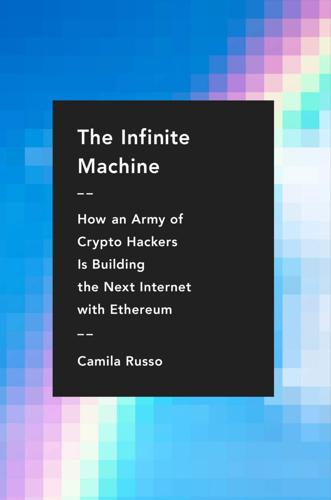
The Infinite Machine: How an Army of Crypto-Hackers Is Building the Next Internet With Ethereum
by
Camila Russo
Published 13 Jul 2020
Next Stallman founded the Free Software Foundation and the GNU General Public License, which said anyone was free to use, copy, distribute, and modify software created under that license. The only requirement was that changes to the code had to be shared. Linux, an operating system that runs on the GNU license, started taking off in the mid-1990s. In 1997, Eric S. Raymond published the essay “The Cathedral and the Bazaar,” comparing two software development models: the cathedral, where code development is restricted to an exclusive group of developers, and the bazaar, where code is public and developed over the internet. The essay was credited to be the final push for Netscape to release the source code for its web browser Mozilla in 1998.
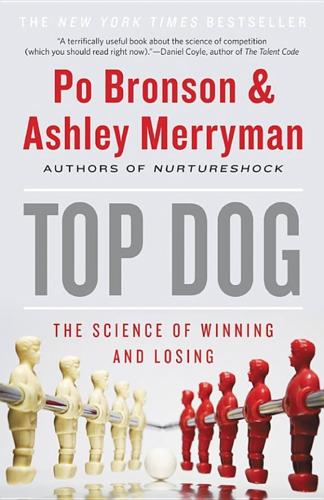
Top Dog: The Science of Winning and Losing
by
Po Bronson
and
Ashley Merryman
Published 19 Feb 2013
Magazine’s 500 Fastest-Growing Companies in America for Second Consecutive Year,” Press Release (8/27/2008) Moon, Jae Yun, & Lee Sproull, “Essence of Distributed Work: The Case of the Linux Kernel,” First Monday, vol. 5(11) (2000) Noyes, Kathleen, “Top Honor for Linus Torvalds Highlights Linux’s Importance,” Operating Systems Blog, PC World, http://bit.ly/HTceE4 (4/19/2012) Peyrache, Eloic, Jacques Cremer, & Jean Tirole, “Some Reflections on Open Source Software,” Communications & Strategies, vol. 40, pp. 139–159 (2000) Raymond, Eric, “The Cathedral and the Bazaar: Musings on Linux and Open Source by an Accidental Revolutionary, Revised Edition,” Sebastopol, CA: O’Reilly & Assoc., Inc. (2001) Terwiesch, Christian, & Yi Xu, “Innovation Contests, Open Innovation, and Multiagent Problem Solving,” Management Science, vol. 54(9), pp. 1529–1543 (2008) Torvalds, Linus, “Re: [Announce] [patch] Modular Scheduler Core and Completely Fair Scheduler [CFS],” E-mail exchange, http://bit.ly/wxQVcQ (4/15/2007) Torvalds, Linus, & David Diamond, Just for Fun: The Story of an Accidental Revolutionary, New York: Harper Business (2002) Watson, Andrew, “Reputation in Open Source Software,” Working Paper (2005) “Who Uses TopCoder?”

Smart Mobs: The Next Social Revolution
by
Howard Rheingold
Published 24 Dec 2011
Richard Stallman, “The Free Software Definition,” The GNU Project, Free Software Foundation, 2000, <http://www.gnu.org/philosophy/free-sw.html> (17 June 2001). 58. Ibid. See also: Michael Stutz, “Freed Software Winning Support, Making Waves,” Wired News, 30 January 1998, <http://www.wired.com/news/technology/0,1282,9966,00.html > (5 February 2002). 59. Eric Raymond, The Cathedral and the Bazaar: Musings on Linux and Open Source by an Accidental Revolutionary (Sebastopol, Calif.: O’Reilly and Associates, 1997). See also: <http://www.tuxedo.org/~esr/writings/homesteading/ >(29 January 2002). 60. BIND (Berkeley Internet Name Domain), <http://www.isc.org/products/BIND/> (16 January 2002). 61.

Machine, Platform, Crowd: Harnessing Our Digital Future
by
Andrew McAfee
and
Erik Brynjolfsson
Published 26 Jun 2017
Ramy Arnaout: Dana-Farber/Harvard Cancer Center, “Ramy Arnaout, MD, PhD,” accessed February 8, 2017, http://www.dfhcc.harvard.edu/insider/member-detail/member/ramy-arnaout-md-phd. 254 “None were academic or industrial computational biologists”: Lakhani et al., “Prize-Based Contests.” 255 “In the more than 700 challenges”: Karim Lakhani, interview by the authors, October 2015. 258 many problems, opportunities, and projects: Anita Williams Woolley et al., “Evidence for a Collective Intelligence Factor in the Performance of Human Groups,” Science 330, no. 6004 (2010): 686–88. 259 “Given enough eyeballs, all bugs are shallow”: Eric Raymond, The Cathedral and the Bazaar (Sebastopol, CA: O’Reilly Media, 1999), 19. 259 When Lakhani and Lars Bo Jeppesen studied: Lars Bo Jeppesen and Karim R. Lakhani, “Marginality and Problem-Solving Effectiveness in Broadcast Search,” Organization Science, February 22, 2010, http://pubsonline.informs.org/doi/abs/10.1287/orsc.1090.0491. 260 Amazon’s Mechanical Turk: Jason Pontin, “Artificial Intelligence, with Help from the Humans,” New York Times, March 25, 2007, http://www.nytimes.com/2007/03/25/business/yourmoney/25Stream.html. 260 transcribing text from business cards into a spreadsheet: Jeremy Wilson, “My Gruelling Day as an Amazon Mechanical Turk,” Kernel, August 28, 2013, http://kernelmag.dailydot.com/features/report/4732/my-gruelling-day-as-an-amazon-mechanical-turk. 260 “programming design pattern”: Michael Bernstein et al., “Soylent: A Word Processor with a Crowd Inside,” 2010, http://courses.cse.tamu.edu/caverlee/csce438/readings/soylent.pdf. 260 people who identify as designers: Topcoder, “Topcoder Is Different,” accessed February 8, 2017, https://www.topcoder.com/member-onboarding/topcoder-is-different. 261 Kaggle: Kaggle, accessed March 10, 2017, https://www.kaggle.com. 261 officiating at a wedding: JamieV2014, “Task of the Week: Perform My Marriage,” TaskRabbit (blog), March 26, 2014, https://blog.taskrabbit.com/2014/03/26/task-of-the-week-perform-my-marriage. 261 delivering ice cream cake: LauraTaskRabbit, “Task of the Week: Deliver Ice Cream Cake to My Grandpa,” TaskRabbit (blog), November 18, 2014, https://blog.taskrabbit.com/2014/11/18/task-of-the-week-deliver-ice-cream-cake-to-my-grandpa. 261 waiting in line at the Apple Store: JamieV2014, “We’re First in Line at the Apple Store,” TaskRabbit (blog), September 17, 2012, https://blog.taskrabbit.com/2012/09/17/were-first-in-line-at-the-apple-store. 261 The TV show Veronica Mars: IMDb, s. v.
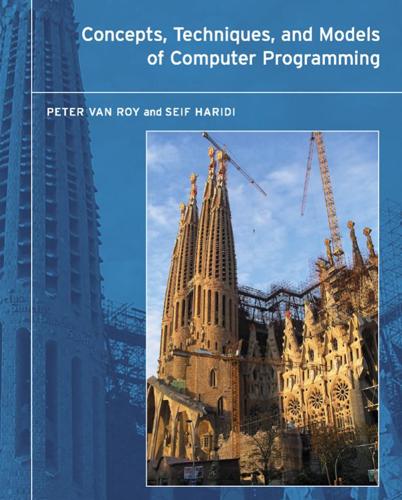
Concepts, Techniques, and Models of Computer Programming
by
Peter Van-Roy
and
Seif Haridi
Published 15 Feb 2004
We suggest [168, 172] as general texts and [205] for a view on how to balance design and refactoring. The Mythical Man-Month by Frederick Brooks dates from 1975 but is still good reading [29, 30]. Software Fundamentals is a collection of papers by Dave Parnas that spans his career and is good reading [162]. The Cathedral and the Bazaar by Eric Raymond is an interesting account of how to develop open source software [174]. Component Software: Beyond Object-Oriented Programming For more information specifically about components, we recommend Component Software: Beyond Object-Oriented Programming by Clemens Szyperski [208].
…
[173] Mahmoud Rafea, Fredrik Holmgren, Konstantin Popov, Seif Haridi, Stelios Lelis, Petros Kavassalis, and Jakka Sairamesh. Application architecture of the Internet simulation model: Web Word of Mouth (WoM). In IASTED International Conference on Modelling and Simulation MS2002, May 2002. [174] Eric Raymond. The Cathedral and the Bazaar: Musings on Linux and Open Source by an Accidental Revolutionary. O’Reilly & Associates, January 2001. [175] Juris Reinfelds. Teaching of programming with a programmer’s theory of programming. In Informatics Curricula, Teaching Methods, and Best Practice (ICTEM 2002, IFIP Working Group 3.2 Working Conference), Boston, 2002.
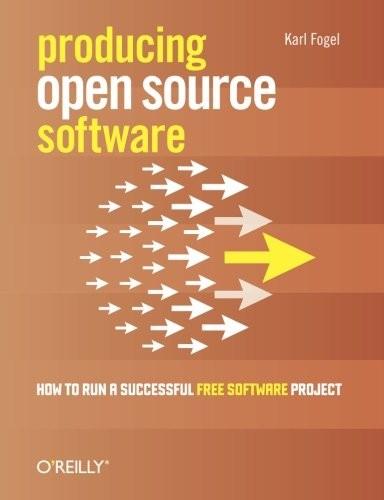
Producing Open Source Software: How to Run a Successful Free Software Project
by
Karl Fogel
Published 13 Oct 2005
The varieties of human culture being what they are, I can give no single, succint rule to cover all such cases, except to say that you should try to be welcoming to all potential contributors and, if you must discriminate, do so only on the basis of actual behavior, not on the basis of a contributor's group affiliation or group identity. Chapter 2. Getting Started The classic model of how free software projects get started was supplied by Eric Raymond, in a now-famous paper on open source processes entitled The Cathedral and the Bazaar. He wrote: Every good work of software starts by scratching a developer's personal itch. (from catb.org/~esr/writings/cathedral-bazaar/ ) Note that Raymond wasn't saying that open source projects happen only when some individual gets an itch. Rather, he was saying that good software results when the programmer has a personal interest in seeing the problem solved; the relevance of this to free software was that a personal itch happened to be the most frequent motivation for starting a free software project.
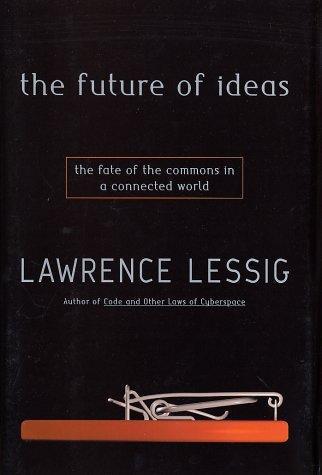
The Future of Ideas: The Fate of the Commons in a Connected World
by
Lawrence Lessig
Published 14 Jul 2001
Wayner, 98-99. 51 There is an interesting but unresolved debate about whether GPL (the strictest of the open code licenses) does more to stem the risk of forking than more permissive open code licenses. Compare Young and Rohm, 180 (arguing that GPL minimizes forking), with Wayner, 221 (arguing the contrary). 52 Ibid., 210. 53 Eric S. Raymond, The Cathedral and the Bazaar: Musings on Linux and Open Source by an Accidental Revolutionary (Beijing and Sebastopol, Calif.: O'Reilly, 1999), 151. 54 Wayner, 289. 55 “IBM Extends Software Leadership on Linux,” IBM Press Release, December 8, 2000. 56 Economists have only begun to examine the incentives that might affect open code projects.
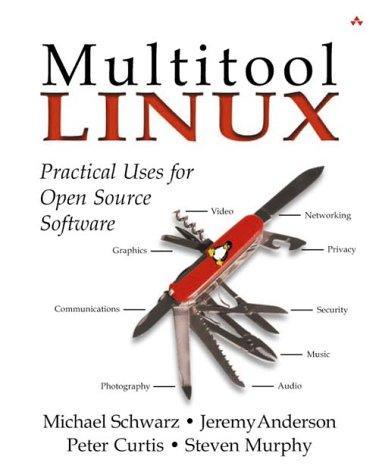
Multitool Linux: Practical Uses for Open Source Software
by
Michael Schwarz
,
Jeremy Anderson
and
Peter Curtis
Published 7 May 2002
Raymond wrote a number of seminal papers on the phenomenon of what he and Bruce call open source development but what I think may be more generally called Internet-distributed software development. Eric tends to come to fairly far-reaching conclusions from a limited number of data points, but it doesn't change the fact that The Cathedral and the Bazaar has become what may be the single most influential essay on the whole phenomenon of free software. Bruce and Eric maintain a Web site, opensource.org, where they push the notion of Open Source and downplay the term Free Software. They also created an "Open Source Certification and Mark" program that would assure a consumer that a product's license met their Open Source Definition.

The Future of the Internet: And How to Stop It
by
Jonathan Zittrain
Published 27 May 2009
Wikimedia Commons, Barnstar, http://commons.wikimedia.org/wiki/Barnstar (as ofJUNE 1, 2007, 08:30 GMT) (describing different barnstars awarded to Wikipedia contributors). 36. Wikipedia, English Wikipedia, http://en.wikipedia.org/wiki/English_Wikipedia (as of June 1, 2007, 08:25 GMT). 37. See Eric S. Raymond, Release Early, Release Often, in THE CATHEDRAL AND THE BAZAAR: MUSINGS ON LINUX AND OPEN SOURCE BY AN ACCIDENTAL REVOLUTIONARY (2001), available at http://www.catb.org/-esr/writings/cathedral-bazaar/cathedral-bazaar/ ar01s04.html. 38. See supra note 2. 39. Jim Giles, Internet Encyclopaedias Go Head to Head, NATURE NEWS, Dec. 14, 2005, http://www.nature.com/news/2005/051212/full/438900a.html (last updated Mar. 28, 2006). 40.
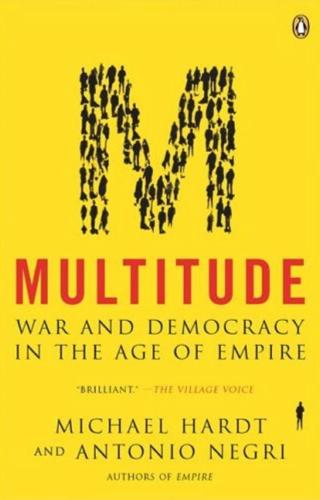
Multitude: War and Democracy in the Age of Empire
by
Michael Hardt
and
Antonio Negri
Published 1 Jan 2004
For Schumpeter’s theory of crisis, see also “The Analysis of Economic Change,” Review of Economic Statistics 17, (May 1935): 2-10; and “Theoretical Problems of Economic Growth,” Journal of Economic History 7 (November 1947): 1-9. 119 See Antonio Damasio, Looking for Spinoza: Joy, Sorrow, and the Feeling Brain (New York: Harcourt, 2003). 120 Eric Raymond, The Cathedral and the Bazaar (Sebastopol, CA: O’Reilly, 1999). For another technology-based analysis of how people are increasingly able to create collaboratively in networks, see Howard Rheingold, Smart Mobs (New York: Basic, 2002). 121 Thomas Hobbes, On the Citizen, trans. Richard Tuck and Michael Siverthorne (Cambridge: Cambridge University Press, 1998), chapter 14. 122 Gilles Deleuze and Claire Parnet, Dialogues II, trans.

Fancy Bear Goes Phishing: The Dark History of the Information Age, in Five Extraordinary Hacks
by
Scott J. Shapiro
FOSS: For the locus classicus of FOSS, see Richard Stallman, “GNU Manifesto,” March 1985, http://ftp.math.utah.edu/pub/tex/bib/toc/dr-dobbs-1980.html#10(3): March 1985. For an excellent ethnography of the FOSS LINUX/Debian community, see Gabriella Coleman, Coding Freedom: The Ethics and Aesthetics of Hacking (Princeton, NJ: Princeton University Press, 2012). all bugs are shallow: Linus’s law was formulated by Eric S. Raymond in The Cathedral and the Bazaar (Sebastopol, CA: O’Reilly Media, 1999). Raymond named his law in honor of Linus Torvalds, the first developer of the Linux kernel. military built its internet: Thomas G. Harris, et al., “Development of the MILNET,” 15th Annual Electronics and Aerospace Systems Conference (1982), 77–80.
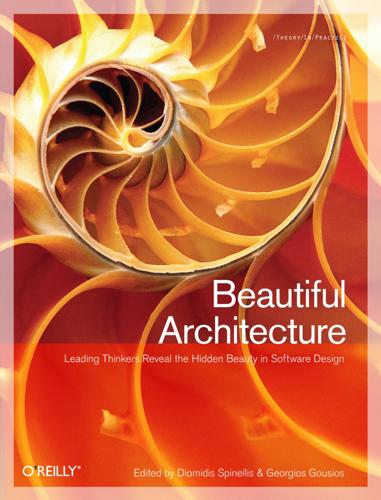
Beautiful Architecture: Leading Thinkers Reveal the Hidden Beauty in Software Design
by
Diomidis Spinellis
and
Georgios Gousios
Published 30 Dec 2008
Before we look in detail at two concrete examples of how the technical, social, and structural issues were approached and dealt with by groups within KDE, it seems useful to provide some background on the history of the KDE project in these three areas. The following section will thus describe what KDE is today and how the community arrived at that point. * * * [58] Also referred to as open source software. [59] http://en.wikipedia.org/wiki/The_Cathedral_and_the_Bazaar [60] This is fundamentally different from software that is entirely produced for a market. Free Software can cater to the needs of the blind, for example, without having to justify the considerable effort needed for that with corresponding sales figures and expected returns on the investment.

Future Politics: Living Together in a World Transformed by Tech
by
Jamie Susskind
Published 3 Sep 2018
Big Think, 2016 <http://bigthink.com/paul-ratner/harvard-teamcreates-octobot-the-worlds-first-autonomous-soft-robot> (accessed 30 Nov. 2017). Rawls, John. A Theory of Justice. Cambridge, Mass: Harvard University Press, 2003. Rawls, John. Political Liberalism. New York: Columbia University Press, 2005. Raymond, Eric S. The Cathedral and the Bazaar: Musings on Linux and Open Source by an Accidental Revolutionary. Cambridge, Mass: O’Reilly Media, 2001. Raz, Joseph. The Morality of Freedom. Oxford: Oxford University Press, 1986. Raz, Joseph, ed. Authority. Oxford: Basil Blackwell Ltd, 1990. Raz, Joseph. The Authority of Law (Second Edition).

Programming in Scala
by
Martin Odersky
,
Lex Spoon
and
Bill Venners
Published 15 Jan 2008
Here is the definition of a method using that type, which calculates the factorial of a passed integer value:5 def factorial(x: BigInt): BigInt = if (x == 0) 1 else x * factorial(x - 1) Now, if you call factorial(30) you would get: 265252859812191058636308480000000 Prepared for tetsu soh BigInt looks like a built-in type, because you can use integer literals and operators such as * and - with values of that type. Yet it is just a class that 3 Raymond, The Cathedral and the Bazaar. [Ray99] “Growing a language.” [Ste99] 5 factorial(x), or x! in mathematical notation, is the result of computing 1 * 2 * ... * x, with 0! defined to be 1. 4 Steele, Cover · Overview · Contents · Discuss · Suggest · Glossary · Index 41 Section 1.1 Chapter 1 · A Scalable Language happens to be defined in Scala’s standard library.6 If the class were missing, it would be straightforward for any Scala programmer to write an implementation, for instance, by wrapping Java’s class java.math.BigInteger (in fact that’s how Scala’s BigInt class is implemented).

Bourgeois Dignity: Why Economics Can't Explain the Modern World
by
Deirdre N. McCloskey
Published 15 Nov 2011
I again thank Professor Margaret Raftery of the University of the Free State, South Africa, for leading me into the text. 24. Todeschini 2008, p. 23. 25. Davis 2012, p. 134. 26. Everyman, ca. 1480, lines 134, 333; subsequent quotations are lines 501–502, 232, 882, 428–430, 442. 27. Gardiner, personal correspondence, 2013. From prospectus for “‘What Price God’s People?’ The Cathedral and the Bazaar in Late Antiquity.” 28. Strietman 1996, p. 107. 29. Dijk 1996, p. 113. The italics in the Strietman quotation that follows are mine. 30. Viner 1959, p. 43. 31. Kuran 2003, p. 310. Chapter 47 1. Hirschman 1977, p. 58. 2. Tacitus, sect. 14, p. 114. 3.
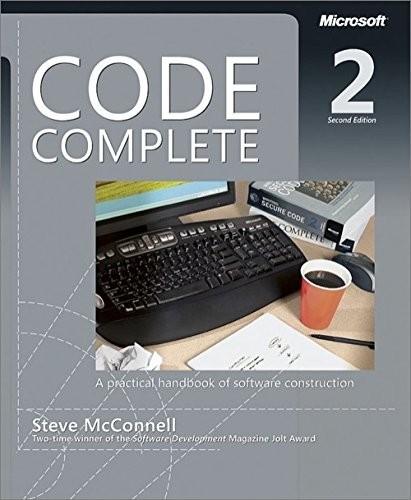
Code Complete (Developer Best Practices)
by
Steve McConnell
Published 8 Jun 2004
[bib36entry396] Ramsey,H.Rudy, MichaelE.Atwood, and JamesR.Van Doren. 1983. “"Flowcharts Versus Program Design Languages: An Experimental Comparison."” Communications of the ACM 26, no. 6 (6): 445–49. [bib36entry397] Ratliff,Wayne. 1987. Interview in Solution System. [bib36entry398] Raymond,E. S. 2000. “"The Cathedral and the Bazaar,"” http://www.catb.org/~esr/writings/cathedral-bazaar. [bib36entry399] Raymond,EricS. 2004. The Art of Unix Programming. Boston, MA: Addison-Wesley. [bib36entry400] Rees,MichaelJ. 1982. “"Automatic Assessment Aids for Pascal Programs."” ACM Sigplan Notices 17, no. 10 (10): 33–42.